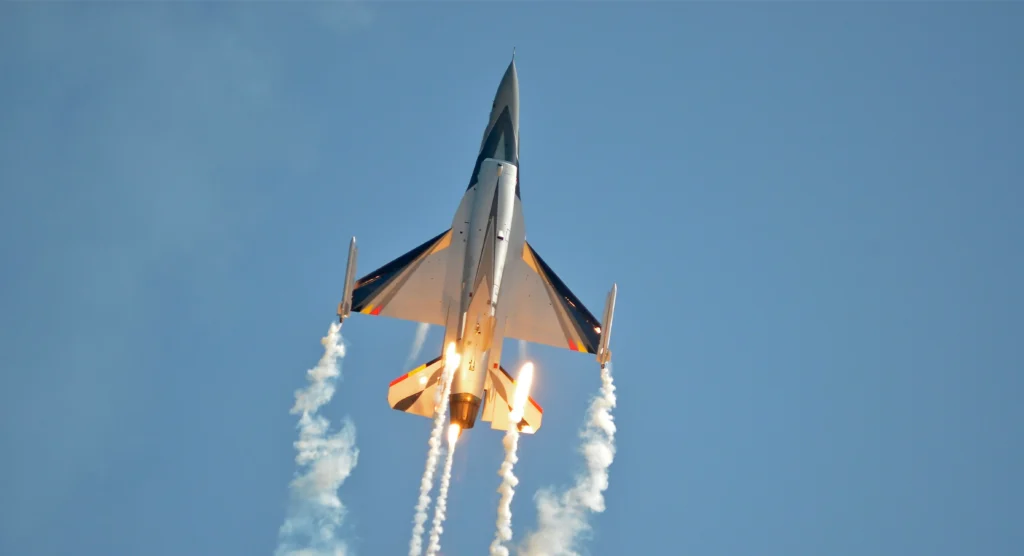- Aerospace
- October 8, 2024

By Mel Broder and Jim Charlton
Raytheon Systems and Galorath Incorporated jointly develop software that incorporates reducibility metrics and risk management.
Background: The U.S. Navy considers the AIM-9X missile a flagship program for its design-to-cost initiative, estimating $1.2 billion in savings during development and procurement. Previous missile programs faced significant cost overruns, sometimes doubling in cost. To avoid this, the Navy’s AIM-9X procurement team implemented contract incentives to achieve target cost goals, requiring contractors to incorporate reducibility metrics and risk management into the design process. Raytheon Systems engineers, formerly Hughes, and Galorath Incorporated responded by developing unique software that allows engineers to quickly evaluate design alternatives’ costs and estimate the risk of cost increases in various subsystems. Jim Charlton, Raytheon’s Affordability Manager for the program, stated, “The software allowed the design team to treat a dollar the same as an ohm, a kilogram, or a newton, ensuring cost was considered in virtually every design decision.”
The AIM-9X Evolved Sidewinder is the latest in the AIM-9 short-range missile family, used by over 40 nations worldwide.
Currently in the engineering and manufacturing development (E&MD) phase, the AIM-9X is about a year from production. It is a short-range, launch-and-leave air combat missile using passive infrared (IR) energy for acquisition and tracking, complementing the Advanced Medium Range Air-to-Air Missile (AMRAAM). Its agile airframe and advanced features provide fighter pilots with a significant tactical advantage in dogfights. The AIM-9X offers full day and night capability, resistance to countermeasures, increased off-bore sight acquisition and launch capability, increased maneuverability, and improved target acquisition. It is a joint U.S. Navy and U.S. Air Force program, with the Navy designated as the Executive Service. The Air Force plans to buy 5,080 missiles, and the Navy 5,000, over a planned 17-year production run.
Making a Fixed Price Commitment
Charlton was appointed affordability manager for the AIM-9X program due to his work on the seeker for the Advanced Short-Range Air-to-Air Missile (ASRAAM) produced by Matra BAe Dynamics. In that program, Raytheon had to provide a firm fixed price for a total package including development and production of a fixed quantity of seekers. Taking this program on a fixed price basis presented significant risks. Charlton and other Raytheon engineers managed this risk by developing Excel macros to help engineers consider costs during the design cycle. These macros summarized four types of costs: material quotes from vendors, internal labor cost estimates for fabrication and assembly, rework of components failing first-pass inspection, and internal support expenses. The macros allowed engineers to enter estimates at any desired detail level, from subsystems to individual components, and quickly roll up costs to provide an overall program benchmark.
This tool was enormously successful in controlling costs for the program.
Mel Broder, Manager of Cost Tools and Processes, aimed to leverage these lessons for the AIM-9X but felt the tool was inadequate for providing design-to-cost input for the larger program.
Broder identified three main issues: the Excel-based tool was deterministic, generating a single cost number based on engineers’ assumptions without accounting for design process uncertainty; it was prone to errors, where incorrect cell entries could miscalculate costs by millions; and supporting and upgrading the spreadsheet would be difficult as its authors pursued independent career paths within the organization.
Developing a Custom Software Tool
“We created a functional specification for a commercial tool incorporating our algorithms while providing risk analysis and auditing capabilities,” Broder said. After evaluating commercial cost models, the SEER-DFM™ software package from Galorath Incorporated (www.galorath.com) was selected.
SEER-DFM has powerful risk management tools and can accept custom cost models as plugins.
Raytheon engineers provided their algorithms in spreadsheets to a Galorath team led by Karen McRitchie, Vice President of Development. McRitchie’s team encapsulated each model in a plugin, leveraging SEER-DFM’s architecture to integrate custom models easily. Each plugin, a Dynamic Link Library (DLL), carries a database with process information. The program can access external databases in almost any format, allowing Raytheon to provide an up-to-date database with each program copy, containing standard information such as material cost factors and labor rates.
Raytheon engineers used the software from the AIM-9X program’s start. Initially, engineers entered estimated costs for each of the missile’s five subsystems. This high-level estimate got engineers thinking about each subsystem’s budget from the start. Unlike previous missile systems, where cost considerations occurred late in the design process, this approach allocated budgeted costs among subsystems from the beginning. This forced necessary tradeoffs, including removing requirements or relaxing performance constraints while meeting overall program objectives. This process was repeated at finer detail levels as the project continued.
“As the program moved forward,” Charlton continued, “the modeling grew in complexity but maintained the same framework. This allowed for higher detail levels in some project parts and lower levels in others. The original algorithms included learning curves, enabling engineers to estimate production prices for each of the program’s 20 planned production lots, each corresponding to approximately one year’s production. The model’s ability to handle risk was key to controlling costs. For each subsystem or component, engineers entered expected, lowest, and highest possible costs. These figures were automatically rolled up at the subsystem and program levels, making it easy to focus on high-risk program areas. In some cases, less risky but more costly technology was chosen, while in others, additional engineering resources reduced the risk factor. The cost estimation tool’s power was so apparent that Navy program managers requested and received regularly updated model copies to track engineering design-to-cost efforts.”
The net result, according to Charlton, was something many involved in the procurement process thought impossible. The development process is nearly complete, and the development and production cost estimates made four years ago haven’t changed.
Navy Commander Mike Skratulia, Deputy Navy Acquisition Reform Executive, has called the AIM-9X program the greatest success in the Navy’s cost as independent variable (CAIV) program.
If Raytheon maintains the original cost estimates through the program’s 20-year life cycle, savings could far exceed the $1.2 billion Skratulia cited. This project’s success has firmly established the design-to-cost concept and the custom software tool, RAYCOST, as essential to Raytheon’s engineering process. Raytheon has even expanded the tool’s applicability to include parametric estimating using weight-based inputs.




